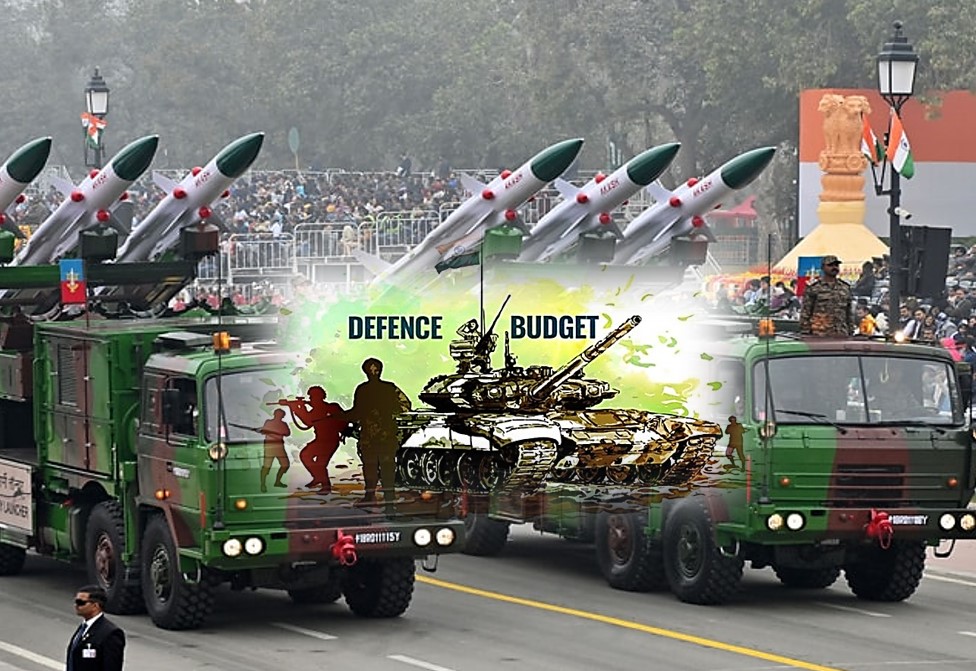
Defence Budget 2023-24: Staying The Course Of Strength and Self-Sufficiency

The run-up to the budget unveiling is invariably an open season for speculation and ‘requests’ by all the stakeholders of the economy for favourable treatment. This year was no different. The dialogue was even more animated, given the severity of the country’s leadership challenges.
Over the past two years, the world has been teetering at the edge of recession. Firmly yoked to other significant economies, India’s economy has not been untouched by the turbulence. The shadow of coronavirus, too, has not fully receded on demand and supply. The ongoing Ukraine war has added a disruption that has engulfed geo-economics far beyond its battlefields.
Internally, the need to shore up infrastructure, nurse the social sector, alleviate poverty and spur corporate growth were some of the resource challenges that competed with India’s defence and security demands. In the past two years, those demands have been exacerbated after Chinese belligerence, and malevolent intent presented evidence of clear and present danger. And neither the spectre of terrorism in Jammu and Kashmir nor the potential of Pakistani mischief along the Western frontier has disappeared.
On the other hand, for reasons of political pragmatism, most observers had anticipated that in this, the last budget before the general election, the ruling dispensation would defer to the pull of short-term populism instead of keeping a long-term perspective.
Against that backdrop, the defence budget has shown appreciable consistency and persistence in continuing the theme song of strengthening the country’s defence, spurring self-sufficiency through indigenisation or Atmanirbhar Bharat and providing for capital growth. The allocation of 5.94 lakh crores – the highest among all the ministries and over 13 per cent of the government’s entire expenditure – constitutes a jump of 12.95 per cent over last year’s outlay of 5.25 lakh crores. The increase must be seen as a remarkable staying the course – despite the headwinds – charted during the past few years.
A closer examination of the finer print reveals several strands of the government’s thinking. The capital expenditure to purchase new weapons, aircraft, naval ships, construction work, and the Ex-serviceman Contributory Health Scheme has been raised from 1.52 to 1.62 lakh crores. The modest increase continues the trend of previous years. But because India is increasingly veering towards domestic production and acquisition, the allocation axiomatically makes for more bang for the buck.
It is true, though, that several defence manufacturers expected a more significant share of the pie. Indeed, after the budget announcement, the stock of a few defence-related companies like Bharat Electronics, Bharat Dynamics, Hindustan Aeronautics, Paras Defence and BEML showed negative sentiment.
The larger share of the capital outlay has been set aside for the Navy (52804 crores) and the Air Force (57137 crores). The Army will have 37241 crores at its disposal. The figures are in concert with the trend of the last year.
In the past several years, the growing salary and pension bills have become a matter of deep concern. The current budget is again a stark reminder of that phenomenon. The Rs 4.22 lakh crores allocation for revenue expenditure includes a pension outlay of 1.38 lakh crore. Here is the statistical perspective: in last year’s budget, a far lower 1.11 lakh crores had been earmarked for pensions. But the revised estimates reveal that the figure eventually ballooned up to 1.53 lakh crores. If that trend holds, a similar provision may have to be made by the end of the next financial year. It is also not evident if the pension outlay caters to the OROP payout, especially if the Supreme Court orders a one-tranche payment of all arrears.
Interestingly, in another effort to make the (pension bill-centric) Agniveer scheme popular, the finance minister announced an exemption from taxes for the payment received by the ‘Agniveers’ from the Agniveer Corpus Fund.
The budget for Research and Development has seen an exponential increase of 31 per cent. The funds set aside, however, continued to be small (814 crores).
Beyond the numbers, we must understand that the real work lies in the execution; a budget is, after all, just an accounting exercise doubling up as an overall plan. What should be the next areas of focus?
Firstly, the success of this and the following budgets will rest significantly on the efficacy of the indigenisation program, leading to self-sufficiency and exports. As Kriti Upadhyaya pointed out in an article on this platform (Budget 2023: Prioritising Defence and Innovation; 31 January 2023 https://chanakyaforum.co/3YdlzyL), there is a great deal of potential in exports led by the private sector. India’s defence exports have increased eightfold in the past 5-6 years, but a far greater prospect is still untapped. The success of this enterprise would need a resolve similar to what the government has remarkably shown in developing roads, highways and railways infrastructure. Simultaneously, the efficacy of DRDO must be bolstered. Except in a few notable areas, e.g., the missile program and helicopters, the DRDO gives the impression of a sleeping giant. We must also involve the centres of learning and academia in the effort to innovate.
Innovations and acquisitions are both notoriously amorphous phenomena that tend to buck timelines. Not only is timely acquisition through indigenisation critical to security, but it is also integral to reducing our expenditure. Also, not adhering to tight timelines makes accurate budgeting impossible.
Secondly, we will eventually have to reduce the salary and pension bill. This would neither be easy nor desirable without a great deal of reflection and innovative thinking. The talk of having a leaner defence apparatus has done rounds for several years. But that is not an idea whose time has come to the extent that we still face a two-front threat. The recent standoffs with China have put to rest the argument that we must rapidly move away from being a manpower-intensive defence force.
Thirdly, the debate on numbers – how much to allocate, what percentage of GDP it constitutes, what is the increase vis a vis last year’s initial allocation, and how do we compare with our adversaries’ budgets – misses the point. Statistics tend to seduce us to feel satisfied based on our perception and previous years’ markers. But should we not consider what we are trying to achieve through the budget and whether the allocation is sufficient? Will the grants in the budget mitigate our threats in the long run? The absence of a national security strategy is the biggest infirmity in making a budget aligned with our long-term interests.
Fourthly, even as we think of crafting a national security strategy, we must create a 5-to-10-year perspective on defence forces. What is the security scenario – or backdrop – in which the budget is to be drawn up? Such a construct need not be set in cement; it can be reviewed, modified or tweaked yearly to match emerging realities. The US and the UK undertake similar exercises. In the UK, the Ministry of Defence carries out a regular Integrated Security, Defence and Foreign Policy Review. In the US, the process of discussion and debate begins a year ahead of the introduction of the yearly passage of the National Defence Authorisation Act (NDAA), a US federal law specifying the annual budget and expenditures. We could adopt a similar approach and come to clear conclusions through scenario-building exercises and net assessments. For such an approach to succeed, the CDS and Department of Military Affairs will have their work cut out.
Finally, on this budget day, I was again struck by the absence of our strategy-security-mindedness. Throughout the day, television channels held spirited debates on the strengths and weaknesses of the budget. Many even devoted endless soundbites to the impact of the nosediving Adani fortunes on the stock exchange. But rarely did a forum engage in a discussion of the fine print of the defence budget. I agree that defence budgets seldom make a splash among the headlines, partly because it is a ‘niche’ area outside the pale of corporate and business concerns. But it is equally true that the lack of a ‘security strategy culture’ debate stands in the way of an informed defence budget outside stakeholder forums and in the minds of a few experts.
Disclaimer
The opinions expressed in this article are the author’s own and do not reflect the views of Chanakya Forum. All information provided in this article including timeliness, completeness, accuracy, suitability or validity of information referenced therein, is the sole responsibility of the author. www.chanakyaforum.com does not assume any responsibility for the same.
Chanakya Forum is now on . Click here to join our channel (@ChanakyaForum) and stay updated with the latest headlines and articles.
Important
We work round the clock to bring you the finest articles and updates from around the world. There is a team that works tirelessly to ensure that you have a seamless reading experience. But all this costs money. Please support us so that we keep doing what we do best. Happy Reading
Support Us





















POST COMMENTS (1)
shipu kumar